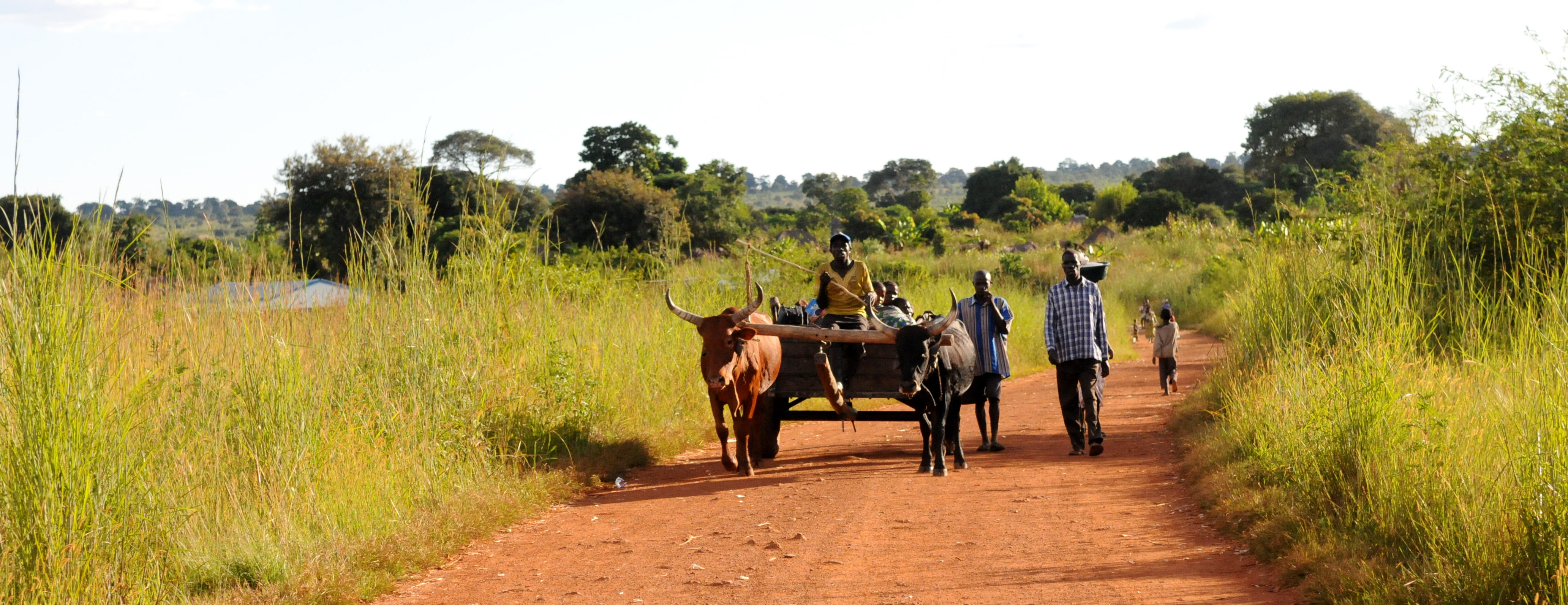
Photo:
The Republic of Zambia is a landlocked country at the crossroads of Central, Southern and East Africa and is a Least Developing Country (LDC). Zambia experiences a predominantly sub-tropical climate marked by a wet-rainy season from mid-November to April. Approximately 55 percent of Zambians live in rural areas of the country where agriculture is a critical source for livelihoods. The Zambian agricultural sector is vital to the country's economy at large, contributing significantly to employment and GDP. Key value chains include maize, soybeans, livestock (poultry, cattle, and pigs), horticulture, and fisheries.
Changes in rainfall patterns threatens productivity of livestock, fisheries, aquaculture and rainfed agriculture in Zambia. Climate variability continues to be a major threat to sustainable development in the agricultural sector leading to threatened food security, disruption of livelihoods, destruction of natural and agriculture resource base, poor adaptive capacity among farmers, inadequate research and development, reduced productivity, inability to measure, and report greenhouse gas emissions from Agriculture Forestry and Other Land Use (AFOLU), livestock and crop disease outbreak.
- National
- National Governments
- Private Sector Partners
- United Nations Development Programme (UNDP)
- Food and Agriculture Organization of the United Nations (FAO)
- Zambia Ministry of Tourism, Environment and Natural Resources
The Zambian National Adaptation Plan formulation was first launched in 2014 and relaunched in 2021 following readiness grant support from the Green Climate Fund (GCF). This NAP identified medium to long-term adaptation actions which will enable the government to systematically implement priority adaptation actions that contribute to the implementation of Vision 2030, National Development Plans and the country’s Nationally Determined Contribution (NDC).
The first iteration of the country’s NAP, published in 2023, is a product of the knowledge gained from the formulation of prior climate plans, such as the National Adaptation Programme of Action (NAPA, 2007), the National Climate Change Response Strategy (NCCRS, 2010), the National Policy on Climate Change (NPCC, 2016), and the Nationally Determined Contribution (NDC, 2016).
These climate plans oversaw the implementation of critical projects, such as the Accelerate Water and Agricultural Resources Efficiency in Zambia (AWARE), Pilot Programme for Climate Resilience (PPCR) Phase II, Strengthening Climate Resilience in the Kafue Sub Basin (Scrika) and Transforming Landscapes for Resilience and Development (TRALARD).
Zambia’s new NAP will be implemented in two phases. The first phase will focus on developing the overarching national NAP, while a sectoral water NAP will be developed in Phase 2.
Since inception, the NAP process has accomplished some of the requirements as provided by the Least Developed Countries Expert Group (LEG) Guidelines. These include stocktaking of available information on climate change; consensus building among stakeholders on the NAP roadmap and official launch of the NAP process in April 2021.
The adaptation planning process in Zambia is expected to strengthen systems for integrating CCA into planning and budget processes, and to develop prioritized adaptation actions with financing strategies.
To achieve this, Zambia’s current legislation and policy frameworks prioritize the climate change agenda that promote the unlocking of bilateral and multilateral funding potential. The country sees strong political commitment and comprehensive overarching institutional and policy coordination frameworks as key triggers of international financing for Climate Change Action (CCA). Creating an enabling environment that provides this level of support is an important first step in accessing climate finance.
The main objective for requesting support from SCALA’s Private Sector Engagement (PSE) Facility is to assist in designing a multi-country Green Climate Fund proposal “Nature-based Solutions for Agro-pastoral Resilience to Climate Change in Catchments in Southern Africa” (NbS-ARC) – with one of the three project countries being Zambia.
The project interventions focus on resilience-enhancing actions to address water and food security needs within catchments in three river basins, and aims to support government, private sector and communities in to develop and execute: (i) climate risk-informed watershed restoration and management, and (ii) climate resilient practices and technologies for agricultural production and sustainable pasture management.
The project will contribute significantly to helping Zambia achieve its National Adaptation Plans/ Nationally Determined Contributions (NAP/NDC) goals related to land use and agriculture. Specifically, it will strengthen the capacity to implement the NAP by offering technical analysis and a range of support in implementing nature-based solutions for climate resilience and applying CRA practices, with mitigation co-benefits.
Scope of work
The objective is to aid in designing a multi-country Green Climate Fund proposal “Nature-based Solutions for Agro-pastoral Resilience to Climate Change in Catchments in Southern Africa” (NbS-ARC).
Activities include:
Identifying a bankable pipeline of CRA investments and supporting the development of credit instruments
Exploring the feasibility of establishing a payment for ecosystem services mechanism to ensure long-term sustainable financing for planned nature-based solutions
